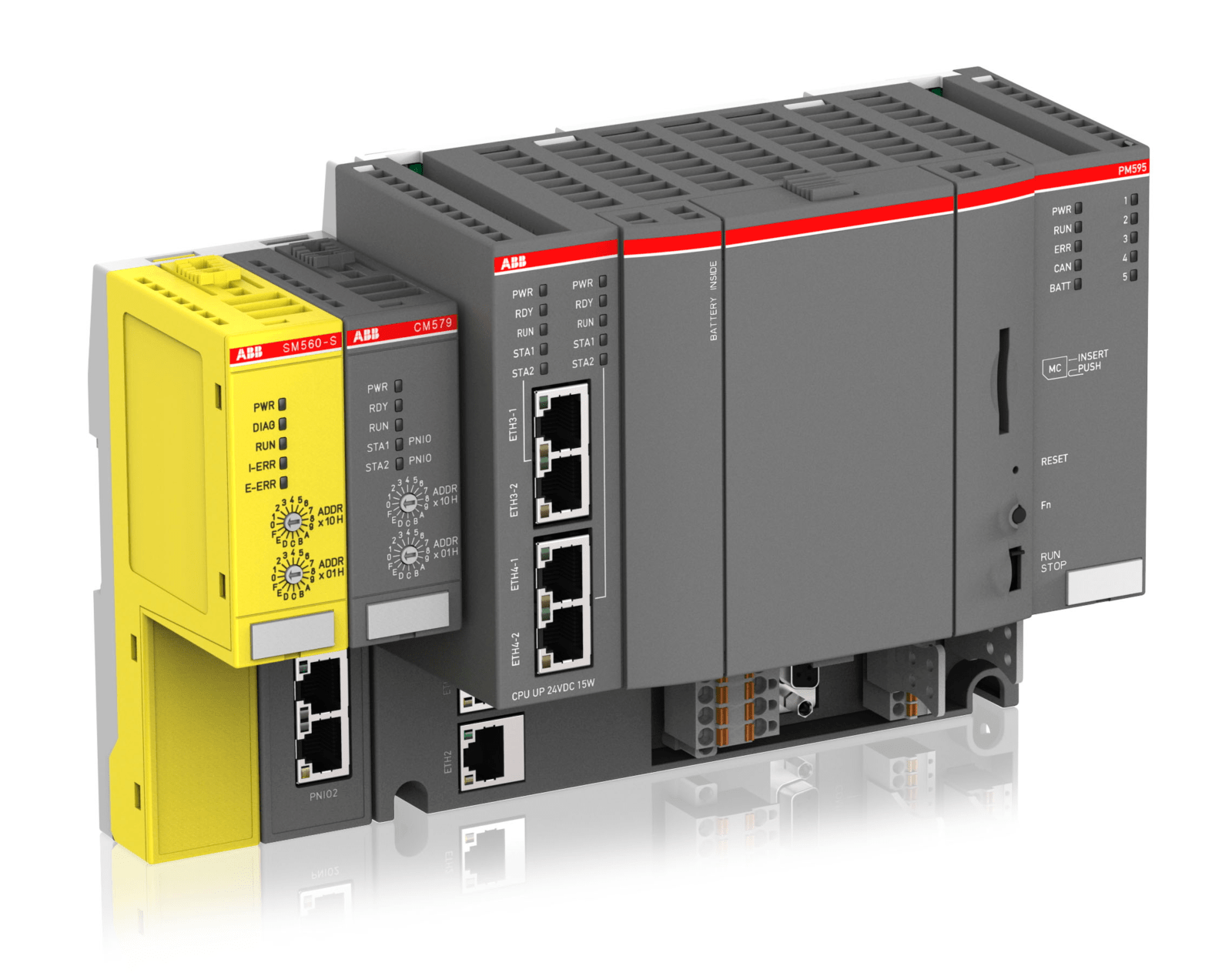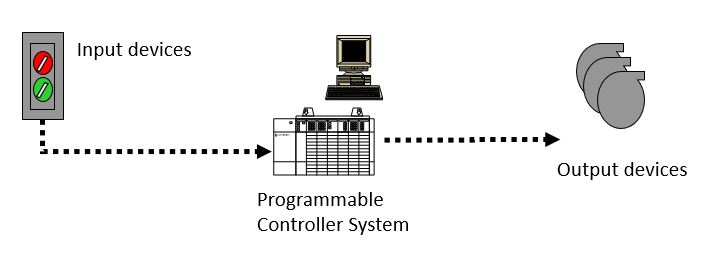Introduction to PLCs
What is a Programmable Logic Controller (PLC)?

In today's rapidly advancing world of industrial automation, Programmable Logic Controllers (PLCs) play a crucial role in controlling machinery and processes across multiple industries. From manufacturing plants to power grids, PLCs ensure machines operate efficiently, safely, and reliably, reducing the margin of human error and making production processes more intelligent.
A PLC is essentially an industrial-grade computer designed to automate mechanical and electrical processes. It handles repetitive tasks such as operating conveyor belts, robotic arms, packaging systems, material handling, and even large-scale industrial machinery. Unlike traditional computers, PLCs are ruggedized for harsh environments. They can withstand extreme temperatures, vibrations, humidity, and electrical noise, making them highly dependable for mission-critical operations.
Why are PLCs Important?
Before PLCs became popular in the 1970s, industries relied on bulky relay-based control systems. These systems required miles of wiring, constant maintenance, and were inflexible if production requirements changed. PLCs revolutionized automation by replacing relays with programmable logic, reducing complexity, improving speed, and making control systems adaptable.
Today, PLCs are vital because they offer:
Faster execution of control tasks – PLCs can scan, process, and output control signals in milliseconds.
Real-time monitoring and data collection – Operators can make informed decisions instantly.
Flexibility for modifications and upgrades – A simple program change can update the entire control strategy.
Improved reliability and reduced downtime – Rugged hardware and self-diagnostics minimize failures.
Industries such as manufacturing, energy, pharmaceuticals, automotive, mining, oil and gas, and smart cities depend on PLCs to automate complex and high-risk processes where safety and efficiency are non-negotiable.
How Do PLCs Work?

The PLC acts as the brain of an automated system. It processes incoming signals, runs pre-programmed logic, and then generates outputs that control machinery or devices. Its operation is based on a simple but highly effective cycle:
- Input Scan – The PLC collects data from sensors, switches, or other devices. For example, it may read the status of a temperature sensor or detect whether a motor is running.
- Program Execution – The PLC executes instructions written by engineers. This logic could be as simple as turning on a pump when water levels drop, or as complex as coordinating an entire production line.
- Output Control – The controller sends electrical signals to actuators, motors, solenoids, or valves, causing real-world actions.
This cycle is repeated continuously in fractions of a second, making PLCs capable of responding to changes in real-time. This speed and reliability are what make them indispensable in automation.
Key Features of PLCs
PLCs are not just simple controllers—they are versatile, industrial-grade computing devices. Their most notable features include:
Modular & Scalable Design – Additional I/O modules or communication cards can be plugged in as systems expand.
Real-Time Processing – Millisecond-level response ensures precise control of fast-moving machines.
Rugged & Durable – Resistant to dust, heat, vibrations, and electromagnetic interference.
Network Communication – Supports protocols like Ethernet/IP, Modbus, Profibus, and OPC-UA for seamless integration.
High Reliability – Designed for 24/7 operations in mission-critical industries.
Easy Programming & Troubleshooting – Engineers can use Ladder Logic (LD), Function Block Diagram (FBD), or Structured Text (ST) for programming.
Types of PLCs
PLCs come in various designs to meet specific needs. The two most common categories are:
1. Compact PLCs
- Self-contained units with limited I/O capacity.
- Best suited for small machines such as packaging lines, elevators, and HVAC systems.
2. Modular PLCs
- Composed of separate modules for CPU, power supply, and I/O, allowing easy customization.
- Ideal for large-scale plants, refineries, power stations, and production lines.
Choosing the right PLC requires analyzing system complexity, future scalability, communication requirements, and environmental conditions.
Real-World Applications of PLCs

PLCs are everywhere. Their versatility allows them to control processes across industries:
Manufacturing – Automating robotic welding, assembly lines, and packaging systems.
Transportation – Railway signaling, airport baggage handling, and metro control systems.
Energy – Controlling turbines, substations, and renewable energy plants.
Water Treatment – Supervising pumps, chemical dosing, and filtration systems.
Building Automation – Managing HVAC, lighting, escalators, and access control.
Advantages of Using PLCs
1. Increased Efficiency
PLCs process inputs and outputs at high speeds, reducing delays and increasing throughput. Automated processes run continuously with minimal human intervention.
2. Easy Troubleshooting & Maintenance
Diagnostic tools help engineers identify faults instantly, reducing downtime and minimizing repair costs.
3. Cost-Effectiveness
Although installation costs can be high, PLCs lower long-term operational expenses through reduced failures and energy optimization.
4. Flexibility & Scalability
PLCs can be reprogrammed when production requirements change, eliminating the need for costly rewiring.
5. Integration with Smart Technologies
Modern PLCs are Industry 4.0 ready—they integrate with IoT devices, cloud platforms, and AI algorithms for predictive maintenance and advanced analytics.
Future of PLCs
As industries transition to smart factories, PLCs will continue to evolve. Future trends include:
- Integration with Artificial Intelligence for predictive control and decision-making.
- Use of Edge Computing to process data closer to machines, reducing latency.
- Cybersecurity-enhanced PLCs to protect critical infrastructure from digital threats.
- Cloud-based PLC programming and remote diagnostics for global operations.
PLCs have transformed automation since their invention and will remain at the core of industrial operations for decades. Their combination of speed, reliability, and adaptability makes them indispensable across manufacturing, infrastructure, and energy sectors.

 Faster execution of control tasks – PLCs can scan, process, and output control signals in milliseconds.
Faster execution of control tasks – PLCs can scan, process, and output control signals in milliseconds. Modular & Scalable Design – Additional I/O modules or communication cards can be plugged in as systems expand.
Modular & Scalable Design – Additional I/O modules or communication cards can be plugged in as systems expand. Manufacturing – Automating robotic welding, assembly lines, and packaging systems.
Manufacturing – Automating robotic welding, assembly lines, and packaging systems. Transportation – Railway signaling, airport baggage handling, and metro control systems.
Transportation – Railway signaling, airport baggage handling, and metro control systems. Energy – Controlling turbines, substations, and renewable energy plants.
Energy – Controlling turbines, substations, and renewable energy plants. Water Treatment – Supervising pumps, chemical dosing, and filtration systems.
Water Treatment – Supervising pumps, chemical dosing, and filtration systems. Building Automation – Managing HVAC, lighting, escalators, and access control.
Building Automation – Managing HVAC, lighting, escalators, and access control.